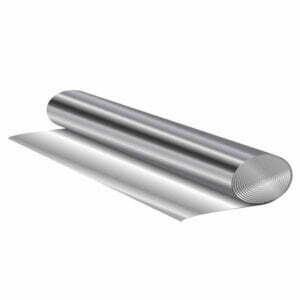BERYLLIUM COPPER TOOLS
Beryllium Copper Tools: Precision and Safety in One Package
Domadia is a renowned manufacturer and supplier of high-quality Beryllium Copper tools. Our commitment to excellence is reflected in our adherence to international standards such as UNS and ASTM. We offer a comprehensive range of tools made from Beryllium Copper, catering to various industrial needs, including non-sparking, high-strength, and corrosion-resistant applications.
Why Choose Beryllium Copper Tools?
Beryllium Copper (BeCu) is an exceptional material known for its unique properties that make it ideal for specialized tools. Here are some reasons why Beryllium Copper tools are the best choice for your needs:
- Non-Sparking: Essential for environments where explosive atmospheres may be present, reducing the risk of fire or explosion.
- High Strength and Durability: Beryllium Copper tools offer excellent mechanical properties, making them durable and long-lasting.
- Corrosion Resistance: These tools can withstand harsh environments, maintaining their integrity over time.
- Thermal and Electrical Conductivity: Ideal for applications requiring good thermal and electrical conductivity.
Our Product Range
- Beryllium Copper Hand Tools: Our range of Beryllium Copper hand tools includes hammers, wrenches, screwdrivers, and pliers. These tools are designed to provide superior performance and safety in explosive environments. They are also corrosion-resistant, ensuring long-term reliability.
- Beryllium Copper Machining Tools: Domadia’s Beryllium Copper machining tools are crafted for precision and efficiency. These tools are perfect for intricate machining tasks where precision is paramount. The high strength and durability of Beryllium Copper ensure that our machining tools provide consistent performance and long service life.
- Beryllium Copper Tooling: Our tooling solutions are designed to meet the rigorous demands of various industries. From molds and dies to custom tooling applications, our Beryllium Copper tooling provides exceptional wear resistance and thermal stability.
Applications of Beryllium Copper Tools
Beryllium Copper tools are used in various industries due to their unique properties:
- Oil and Gas Industry: Non-sparking tools are crucial for safety in explosive atmospheres.
- Aerospace: High-strength and lightweight tools are essential for aerospace applications.
- Electronics: Tools with good electrical conductivity are ideal for electronic manufacturing and maintenance.
- Mining: The corrosion resistance of Beryllium Copper tools makes them suitable for harsh mining environments.
- Medical: Precision and reliability are critical in medical tooling applications.
Technical Specifications
- Chemical Composition: Typically contains 0.5% to 2.5% Beryllium, with the balance being Copper.
- Mechanical Properties: Tensile strength ranges from 1000 to 1500 MPa, with excellent elongation and hardness.
- Thermal Conductivity: Approximately 105 W/mK, ensuring efficient heat dissipation.
- Electrical Conductivity: Around 20% IACS, making it suitable for electrical applications.
Benefits of Beryllium Copper Tools from Domadia
- Superior Quality: Our tools meet international standards, ensuring reliability and performance.
- Customer-Focused Approach: We prioritize customer satisfaction and offer personalized solutions.
- Timely Delivery: Efficient logistics ensure that your tools are delivered on time.
- Comprehensive Support: We offer technical support and after-sales service to assist you with your needs.
Domadia’s Beryllium Copper tools are the epitome of safety, durability, and performance. Whether you need hand tools, machining tools, or specialized tooling solutions, our products are designed to meet the highest standards of quality and reliability. Explore our range of Beryllium Copper tools and discover how they can enhance your industrial applications. For more information, visit our website or contact our customer service team.
For Any Inquiries Contact:-
Call +91 8928403617 or Email: becu@domadia.com
We also Supply Beryllium Copper Rods, Sheet, Wire, Foil, Plate, and Emi Finger Strip.
Q1. What are the main advantages of Beryllium Copper tools?
Beryllium Copper tools are non-sparking, corrosion-resistant, and highly durable. They are ideal for use in explosive environments and offer excellent thermal and electrical conductivity.
Q2. Are Beryllium Copper tools safe to use?
Yes, Beryllium Copper tools are safe to use, especially in environments with explosive potential. However, it is essential to follow proper safety guidelines and handling procedures.
Q3. What industries benefit the most from using Beryllium Copper tools?
Industries such as oil and gas, aerospace, electronics, mining, and medical benefit significantly from using Beryllium Copper tools due to their unique properties.
Q4. How do I maintain Beryllium Copper tools?
Maintenance involves regular cleaning and inspection to ensure that the tools remain in good condition. Avoid exposure to harsh chemicals that could affect the material properties.
Q5. Can Beryllium Copper tools be customized?
Yes, Domadia offers customization services for Beryllium Copper tools to meet specific industrial requirements. Contact us with your specifications, and we will provide a tailored solution.
Error: Contact form not found.











